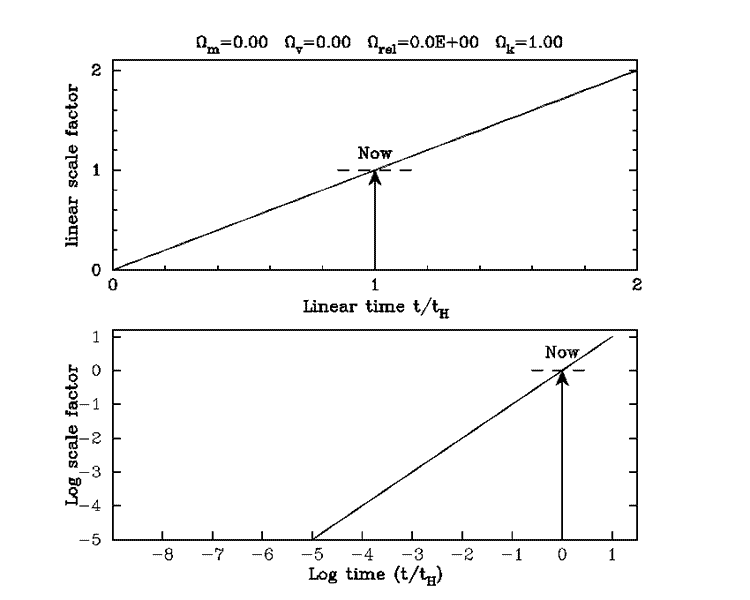
a(t) : pure matter (flat)

a(t) : pure radiation (flat)

 k = +1.0)
k = +1.0) 
a(t) : open matter (
 k = +0.7)
k = +0.7)
Four simple models with different a(t). Top left is pure matter (flat), with
a  t2/3 giving gradient 3/2 in lower plot. Age is
2/3 tH. Top right is for pure radiation (flat), with
a
t2/3 giving gradient 3/2 in lower plot. Age is
2/3 tH. Top right is for pure radiation (flat), with
a  t1/2 with gradient 2 in lower plot. Age is
1/2 tH. The initial expansion needs to be faster, since this is where much of
the deceleration occurs. Remember, the main constraint is flatness, which demands an
initial expansion sufficient to reach "huge" size. Lower left is empty (no matter, radiation, or vacuum energy), hence it is called pure curvature (open,
t1/2 with gradient 2 in lower plot. Age is
1/2 tH. The initial expansion needs to be faster, since this is where much of
the deceleration occurs. Remember, the main constraint is flatness, which demands an
initial expansion sufficient to reach "huge" size. Lower left is empty (no matter, radiation, or vacuum energy), hence it is called pure curvature (open,  k = +1). It has no deceleration or acceleration, hence
straight line in linear plot, and gradient unity in log plot. Age is simple tH.
Finally, lower right is an open matter (
k = +1). It has no deceleration or acceleration, hence
straight line in linear plot, and gradient unity in log plot. Age is simple tH.
Finally, lower right is an open matter ( m = 0.3,
m = 0.3,  k = +0.7) which was favored a few years ago.
Note that it behaves like a pure matter model up to the "equality" of matter and curvature
densities, then it behaves as if it were empty, as you'd expect.
k = +0.7) which was favored a few years ago.
Note that it behaves like a pure matter model up to the "equality" of matter and curvature
densities, then it behaves as if it were empty, as you'd expect.
Figure made for this website.